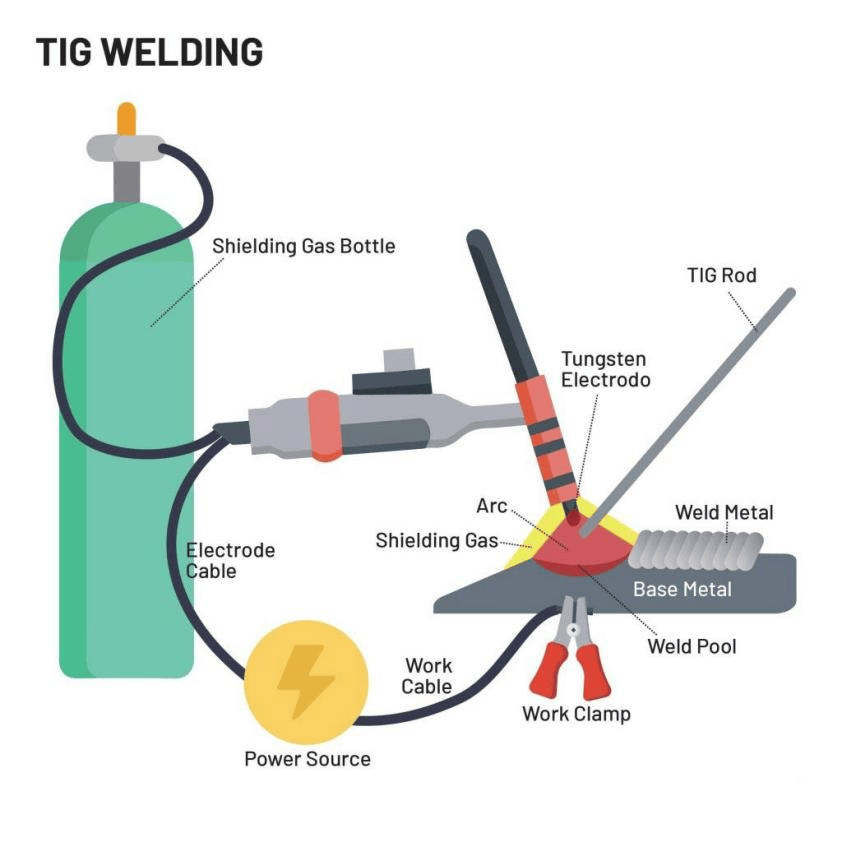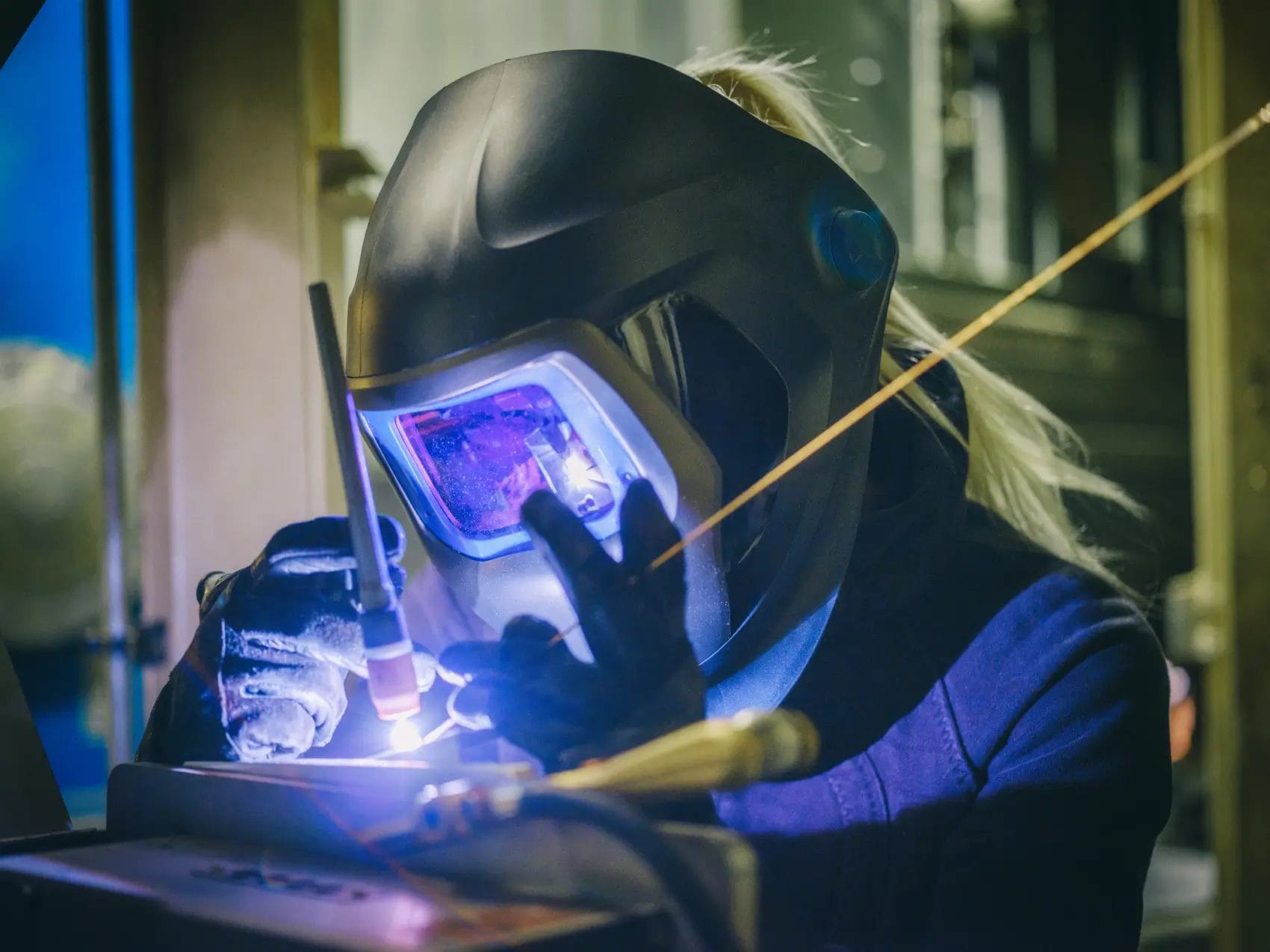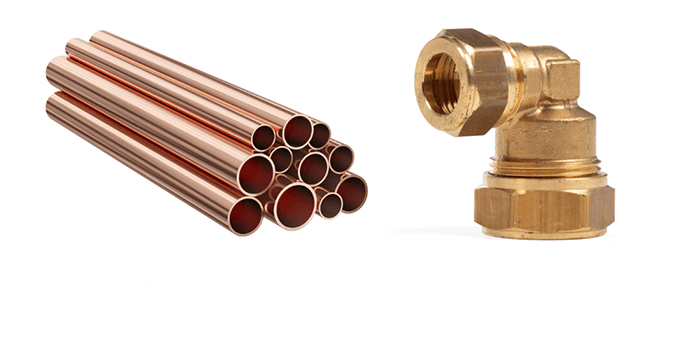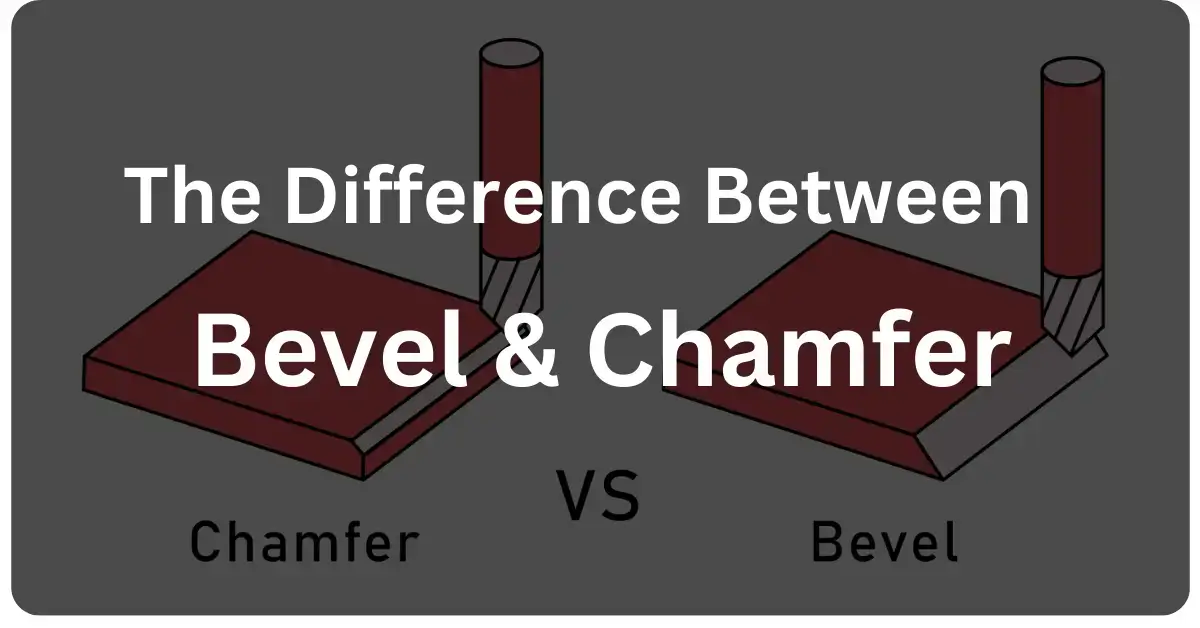MIG (Metal Inert Gas) and TIG (Tungsten Inert Gas) welding both are popular arc welding techniques for the fabrication of metals. Each technique has its strengths and weaknesses that make it suitable for different uses. Picking right welding method is important for business projects. This post explains crucial differences between MIG and TIG welding, their pros and cons, and when to use each process. By the end, you’ll know which technique suits your sheet metal welding needs.
What Is MIG Welding?

MIG welding uses consumable wire electrodes fed through welding gun. An Electric arc forms between the wire and metals, melting them together. A Shielding gas usually argon/CO2 mix, protects weld from contamination.
MIG offers advantages like faster welding speed and higher deposition rates. Also MIG welding is easier to learn than TIG welding. MIG accounts for more than half of all welding metals deposited in industries.
What is TIG Welding?

TIG welding is a technique in which a tungsten electrode creates the arc without melting itself. The welder manually adds filler metal, with pure argon gas shielding the weld. This technique gives a precise control with adjustable amperage through a foot pedal.
TIG welding is suitable for thin materials under 1/4″ thick and non-ferrous metals like aluminum and titanium. TIG welds are very strong because of their precise heat control. They can achieve up to 70% strength of the base metals in aluminum alloys.
The foot pedal enables real-time amperage adjustment that helps welders achieve consistent penetration and bead profile.
MIG vs TIG: Pros and Cons:

Both MIG and TIG welding techniques have distinct characteristics that can be used for different applications.
Here are the pros and cons of MIG and TIG welding which will assist you in choosing right process for your specific needs.
MIG Pros:

Speed and Productivity:
A continuously fed wire leaves both hands free which improves speed, quality and control. MIG welding has faster welding speeds than TIG welding which enhances output for big projects.
High Quality Welds:
MIG welding involves controlled arc and shielding gas which allows welders to produce clean, precise welds with 30% less defects.
Versatility:
Various metals like copper, stainless steel and aluminum can be welded effectively with a 95% success rate.
User Friendly:
MIG welding needs less training time than TIG which makes this technique feasible for large businesses.
Continuous Operation:
It enables smooth working on lengthy weld processes because there is no need to stop to replace stick rod electrodes. It helps welders enhance productivity.
MIG Cons:

Higher initial Costs:
The cost of buying shielding gas, electrodes and nozzles for MIG welding are 30 to 40% higher than stick welding which will have an effect on small projects.
Weld strength limitations:
MIG welds can test out to be 15% weaker than TIG or stick welds for some applications.
Material limitations:
MIG welding is 50% less effective on dirty or rusty metal surfaces since contamination can cause porous welds.
TIG pros
Superior Weld quality:
TIG welding produces a focused arc that penetrates the metal more effectively. It offers strong welds with less defects compared to other methods.
Versatility:
It can weld over 20 various metals, including exotic alloys with 99% success. The tungsten electrode and argon shielding gas can be used for all types of welding applications.
Cleaner Welds:
TIG welding produces 90% less spatter and fumes than MIG. So this way TIG welding ensures minimal cleanup after work.
Thin metal expertise:
TIG can work with high precision on materials as thin as 0.005 inches with 98% less warping risk than MIG.
TIG cons
Expensive equipment:
TIG welding equipment tends to cost more which can affect the overall budget for welding projects.
Not ideal for thick materials:
TIG welding isn’t the most efficient for heavy duty jobs with thick material as it takes more time.
Susceptible to contaminants:
TIG welding requires a clean metal surface because any contaminants can weaken the welds.
MIG and TIG materials comparison:
Both MIG and TIG welding are versatile welding methods. Each process has its own unique advantages for specific materials.
Common materials used in MIG welding:

Carbon steel:
Carbon steel is best for MIG welding because of its fast welding speed, high thermal conductivity and efficient heat spread. Its high 2500°F melting point makes it difficult to twist in welding parameters.
Stainless steel:
MIG welding is great for stainless steel due to its ability to minimize heat input and prevent chromium carbide precipitation. This technique retains the corrosion resistance properties of stainless steel which has a (2750°F) melting point.
Aluminum:
Aluminum’s low 1220°F melting point and high thermal conductivity make it suitable for MIG’s fast energy transfer. It also prevents excessive heat buildup and warping
Common Materials Used in TIG Welding:

Stainless steel:
Stainless steel is better for TIG welding because of its high chromium content which produces an oxide layer and enhances corrosion resistance. Stainless steel’s low thermal conductivity makes it ideal for precise heat control.
Copper:
TIG’s focused arc works well for copper and its excellent heat conductivity (about 401 W/m·K) which can dissipate heat quickly. This precision helps maintain the weld pool for proper fusion.
Brass:
Controlled heat input from TIG welding prevents brass issues such as zinc evaporation at high temperatures. This method helps to maintain alloy properties and composition. Because of low melting point of zinc, it requires careful heat control to prevent zinc vaporization and porosity. Brass excellent corrosion resistance property is maintained post welding
Titanium:
Inert gas shielding in TIG welding is important for titanium because of its high reactivity at welding temperatures. This prevents contamination and maintains the strength of materials which can reach up to 150,000 psi strength in some alloys.
Properties Comparison Table:
This comparison table highlights the strengths of each welding process for different materials, helping businesses choose the most appropriate method for their specific needs and material properties.
Here’s the updated code with the same styling, background color, responsiveness, and border styles as before:
| Property | MIG Materials | TIG Materials |
| Tensile Strength | Up to 70,000 psi (carbon steel) | Up to 150,000 psi (titanium) |
| Hardness | 150-400 HB (carbon steel) | 200-600 HB (stainless steel) |
| Electrical Conductivity | 8-15% IACS (stainless steel) | Up to 100% IACS (copper) |
| Corrosion Resistance | Moderate to High | Very High |
| Heat Resistance | Up to 1000°F (carbon steel) | Up to 2000°F (titanium) |
| Impact Resistance | Moderate | High |
| Chemical Resistance | Good | Excellent |
| Weld Thickness Range | 0.5-6.4 mm | 0.1-6.4 mm |
| Deposition Rate | 2-10 kg/hr | 0.5-2 kg/hr |
Figure 3: Properties Comparison.
MIG and TIG Welding application comparison
MIG welding applications
MIG welding is used in several industries because of its fast speed, easy to use, and capability to handle thick material.
Some important places where it is used:
Automotive industry:
MIG welding is important for welding car frames, exhaust systems and body panels. Its speed and flexibility to weld in many positions make it great for high-volume production lines.
Constructions:
MIG welding is used for construction of structural steel, pipes and sheet metal. Its deep penetration and capability to work with thicker metals ensures strong, long-lasting welds for building infrastructure and building frameworks.
Manufacturing:
for high production, MIG welding is an excellent method for welding of thicker metals. Its semi automatic process allows consistent and high quality welds which makes it suitable for manufacturing large quantities of metal products.
TIG welding applications
TIG welding is known for its precision and high quality welds. It is mostly preferred in industries where detail and finish are very crucial. Some important applications are:
Aerospace Industry:
TIG welding is widely used for high precision welding of aluminum, titanium and stainless steel in aerospace industry. Its capability to produce clean and strong welds is crucial for aircraft parts that need high strength and low weight.
Artwork and sculpture:
Artists and sculptors use TIG to make clean and aesthetically pleasing welds. Its precision allows for intricate designs and smooth finishes which are excellent for artistic projects.
Automotive:
It is used for detailed work and welding thin metal sheets in automotive sector. Its precise control over the weld pool makes it perfect for custom car parts and repairs that need a perfect finish.
When to Use MIG Welding
- MIG welding is preferred for heavy duty fabrication products such as large steen fan housing units as it protects them from exposure to corrosive elements.
- It is particularly effective for high volume projects as it offers faster welding speed and continuous wire feed. It results in enhanced productivity.
- MIG’s shielding gas is excellent in less controlled environments as it maintains weld quality even when conditions aren’t ideal.
When to Use TIG Welding
- When working on materials which are delicate in nature you should consider tig welding as it allows for precise heat control to avoid burn through or warping.
- For complex projects, TIG welding is more suitable than MIG. It’s because it has the ability to adjust amperage through foot pedals which allows for intricate and high quality welds.
- TIG welding is preferred for producing visually clean and aesthetically pretty welds for decorative home stuff.
- TIG is used in making piping systems because it allows for precision that helps in making strong and leak-free welded joints.
Conclusion
MIG and TIG welding are two distinct processes catering to different project needs. MIG welding is faster, more productive, and more versatile. On the other hand, TIG welding offers clean and superior welds and is better for thin metals. By knowing the pros and cons of each, one can make informed choices for their custom work.
If you are in need of custom metal welding, you should consider Yijin Hardware. With 800+ advanced machines and 25,000+ square meters facility, we offer expert MIG and TIG welding services alongside comprehensive metal fabrication solutions. Our cutting-edge equipment and extensive capabilities guarantee high-quality results for diverse project needs.
Contact Yijin Hardware today for professional sheet metal fabrication services tailored to your specific needs and industry requirements.
FAQs
Is MIG or TIG welding stronger?
Answer: TIG makes stronger welds with better penetration and precision. But both methods can create strong joints if done right by skilled welders.
What welding method is easiest to learn?
Answer: MIG is the most user friendly method to learn. It’s quick to set up and gives easier control of weld pool compared to other processes.
Can you weld aluminum with a MIG welding?
Answer: Yes, MIG welders can weld aluminum. It needs spray transfer mode and proper techniques to handle aluminum’s unique properties.
What shielding gas is used for aluminum MIG welding?
Answer: For MIG welding aluminum the most common shielding gas used is 100% argon. This gas allows using spray transfer or pulsed spray transfer mode.

 info@yijinsolution.com
info@yijinsolution.com (+86) 188-2253-7569
(+86) 188-2253-7569







